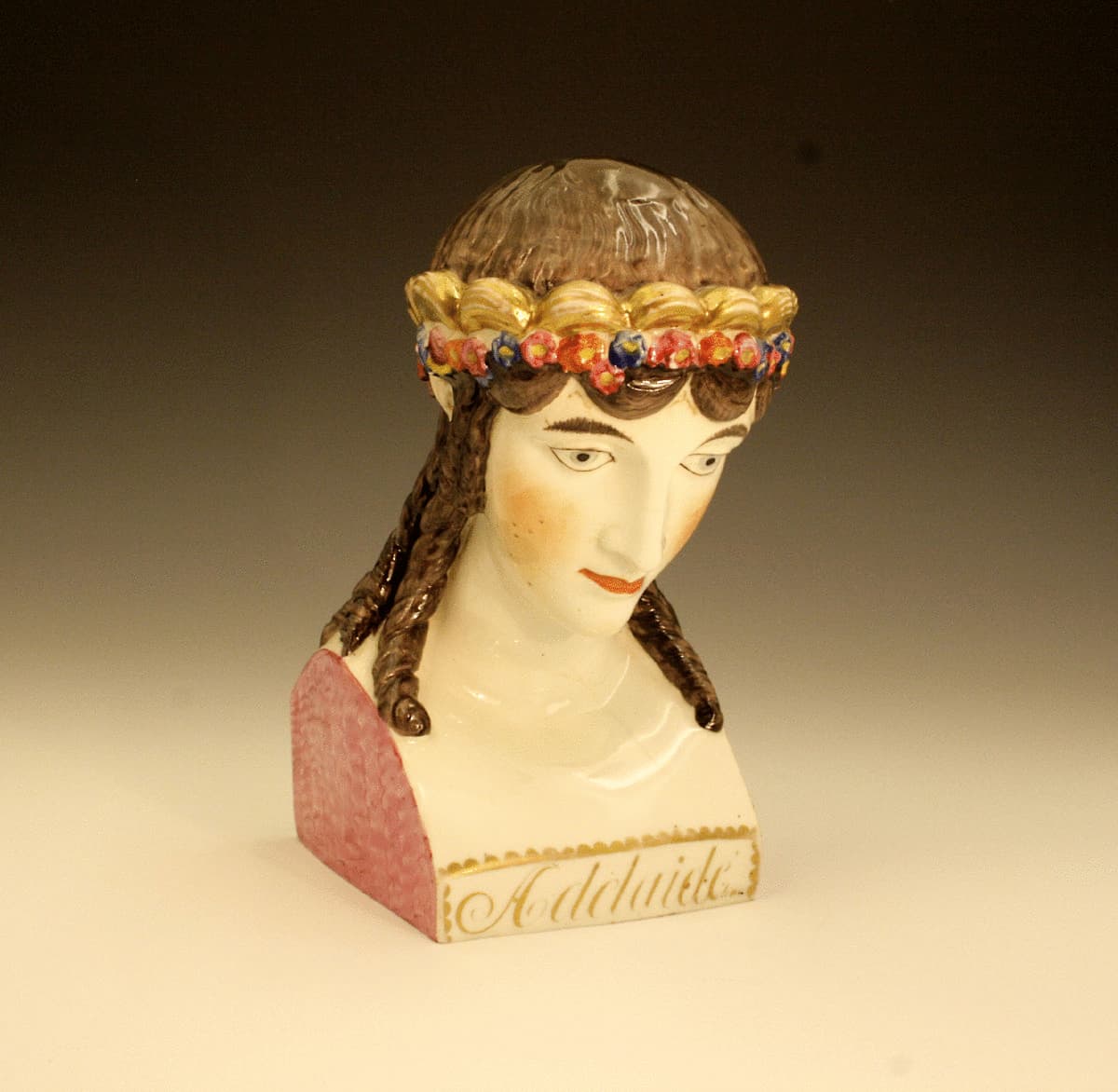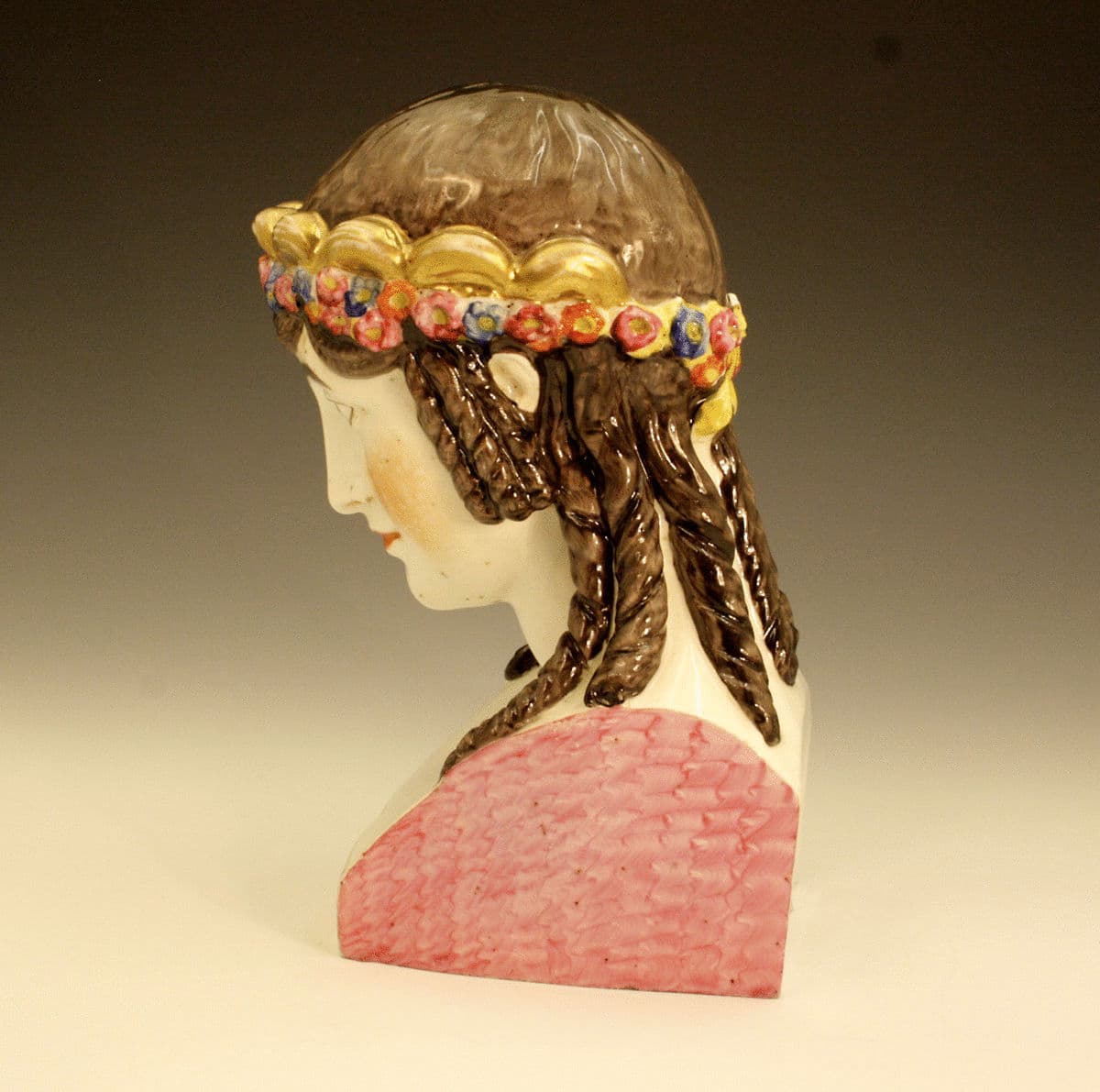Description
Porcellaneous ceramic bust of Adelaide the Consort Queen of King William 111.
Probaly from the John and Rebecca Lloyd of Shelton workshop or Dudson.
EXHIBITION……IF THESE POTS COULD TALK.
At the time of their marriage, it was thought unlikely that Price William would ever become King of England . However, when his brother Frederick, Duke of York, died childless in 1827 it became evident that one day the throne would be his. In 1830, on the death of his elder brother, George IV, William acceded to the throne. The King was crowned, and Adelaide was crowned as his Queen Consort, on 8 September 1831, at Westminster Abbey. Adelaide was deeply religious and took the service very seriously. William despised the ceremony, and acted throughout as if he was “a character in a comic opera”, making a mockery of what he thought to be a ridiculous charade. Adelaide alone among those attending received any praise for her “dignity, repose and characteristic grace”.
Adelaide was beloved by the British people for her piety, modesty, charity, and her tragic childbirth history. A large portion of her household income was given to charitable causes. She also treated the young Princess Victoria of Kent (William’s heir presumptive and later Queen Victoria) with kindness, despite her own inability to produce an heir. Adelaide refused to have women of questionable virtue attend her Court. Wrote Clerk of the Privy Council Charles Greville of her, “The Queen is a prude and refuses to have the ladies come d√©collet√©es to her parties. George the 4th, who liked ample expanses of that kind, would not let them be covered.”.
Adelaide was seriously ill in 1837 and this is probably the time this bust would have been produced in Staffordshire. It is rare to find busts relating to Royalty and this piece reflects the grace and serenity associated with the Queen Consort.



